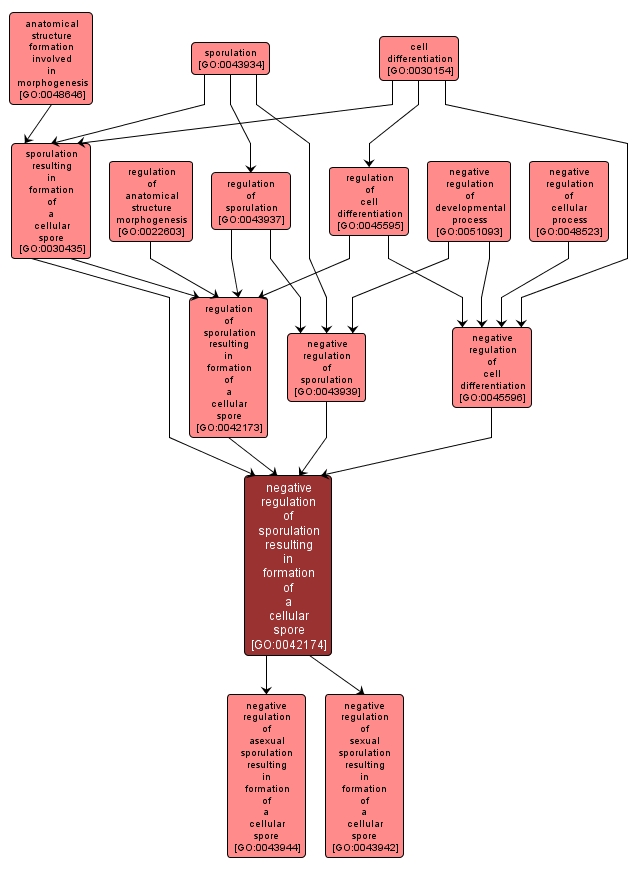GO TERM SUMMARY
|
| Name: |
negative regulation of sporulation resulting in formation of a cellular spore |
| Acc: |
GO:0042174 |
| Aspect: |
Biological Process |
| Desc: |
Any process that stops, prevents or reduces the frequency, rate or extent of sporulation. |
Synonyms:
- down regulation of sporulation
- down-regulation of sporulation
- downregulation of sporulation
- inhibition of sporulation
|
|

|
INTERACTIVE GO GRAPH
|














